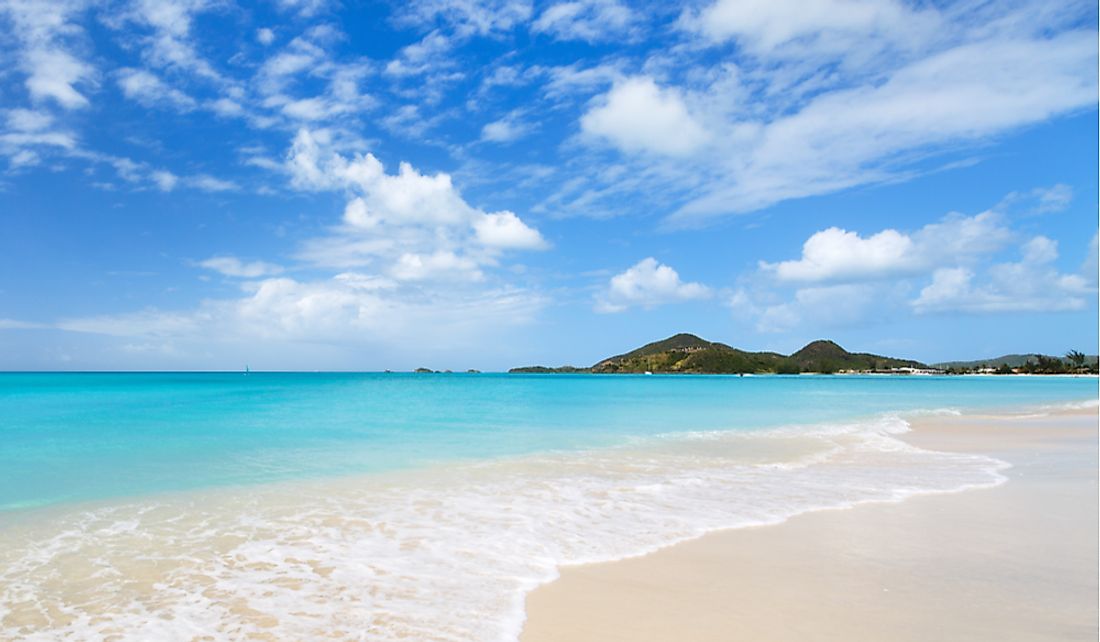What Are The Major Natural Resources Of Antigua And Barbuda?

Antigua and Barbuda is a Caribbean nation consisting mainly of two islands namely Antigua and Barbuda. The country lies between the Atlantic Ocean and the Caribbean Sea. Antigua is the larger of the two islands with an area of around 100 square miles. Other islands in the country are minor and include the likes of Great Bird, York Islands, Guiana, Long, Green, and Long. St. John’s is both the capital and the largest city of Antigua and Barbuda. The country has an area of around 170 square miles while recent estimates state that the population stands at 100,963 people. From an economic perspective, the country has one of the weakest economies in the world with a gross domestic product (GDP) of only $1.535 billion in 2012. Some of the things that drive this economy, as is the case with almost every other country in the world, are the natural resources. Antigua and Barbuda’s major resources include suitable climate for tourism, availability of fertile land for agriculture, minerals, and forest cover.
Arable Land
Currently, the nation uses about 18% of its 30% arable land for agriculture. The most fertile land is located in the central plain region of the country due to an abundance of volcanic ash. Sea-island cotton is one of the major plants due to its value as an export. Aside from cotton, farmers also plant significant amounts of sugarcane for the production of sugar and ethanol (according to future plans). On a smaller scale, agricultural products are mostly vegetables such as beans, cucumbers, tomatoes, squash, yams, cabbages, and others. In the past, about 30 years ago, the sector contributed about 40% of the nation’s GDP. In recent years, however, the contribution to the GDP has gone down to only 12%. The decrease in the contribution to the GDP can be explained by the government’s move of encouraging farmers to practice the growth of food crops. By growing more food crops, the government hopes to cut down on food imports, which account for about a quarter of the total value of imported goods.
Livestock
Away from crop production, the state’s population also practices animal husbandry. For example, in 2004, there were about 36,000 goats, 19,000 sheep, more than 14,000 head of cattle, and around 5,700 hogs. The government has been seeking to improve the sector by introducing better breeds and obtaining grants.
Fish
Most of the fishing is enough to provide fish for local consumption. However, some fish is exported to Guadeloupe and Martinique while the United States is a major destination for lobster. In 2000, Antigua and Barbuda produced about 1,481 tons of fish and around 42 tons of lobster. In the same year, fish commodities generated around $1.5 million through exports. Most of the fishing is done in the water between the two islands although there are some farms that rear shrimp and lobster. The government has encouraged the use of modern fishing techniques to increase fishing yields.
Minerals
The islands also have a few mineral resources including limestone, barite, building stone, and clay. Some parts of the country, such as Barbuda, produced little salt while Redonda produced some phosphate. However, in recent years, the exploitation has gone down as the reserves also reduce. Volcanic stone, clay, and limestone have been exploited as building materials.
Forests
Forest cover is also another resource that serves to protect the soil, water, and wildlife in the country. Data shows that 11% of the country is forested with the main trees including acacia, red cedar, white cedar, and mahogany. Most of the land is covered with sandy soil, which only supports scrub vegetation.
Tourism in Antigua and Barbuda
Tourism is perhaps the most crucial natural resource in the country’s economy. Data shows that the tourism sector provides employment to a huge portion of the population while it is also a leading source of foreign exchange. For example, in 1999, the tourism sector contributed about 60% of the GDP as well as more than 50% of all the jobs in the nation. Over the years, the sector has been improving and growing as evidenced by the growth rate of 8.24% between 1990 and 1995 up from 7% between 1985 and 1989.
Visitors to the country are treated to a number of sites such as UNESCO World Heritage sites that includes Betty's Hope, Nelsons Dock Yard, and Shirley Heights. Aside from that, they get to enjoy the hundreds of sandy beaches, the climate, and the wide array of restaurants.
In recent years, however, there has been an upturn in the number of visitors with a surge observed in 2017. An even bigger surge in 2018 was recorded after the country received about 148,139 tourists in the first half of 2018. The figure represented an increase of at least 7% from the first half of 2017. Most of the visitors came from three countries namely Canada, the United Kingdom, and the United States.











